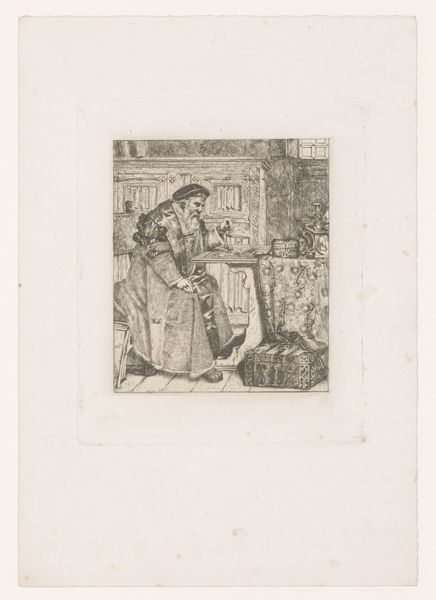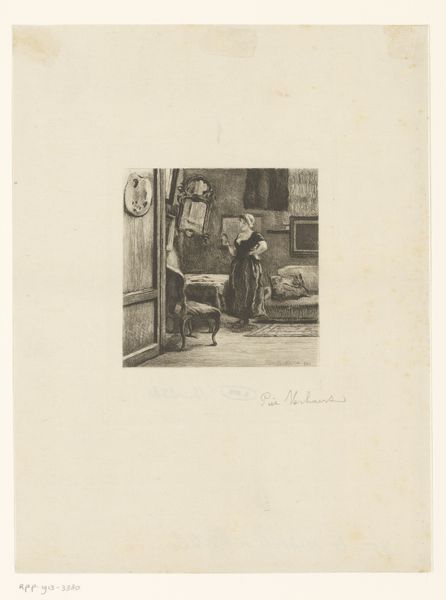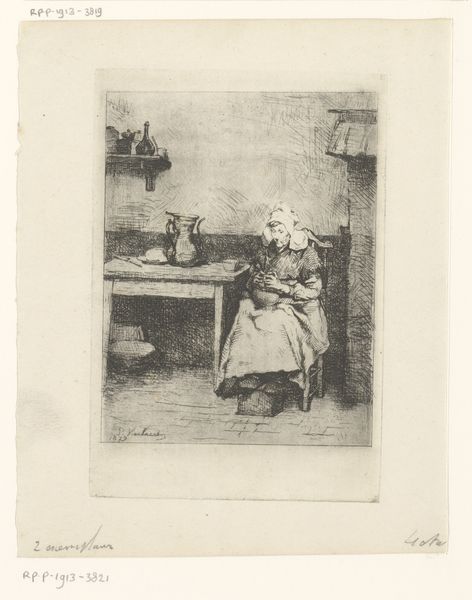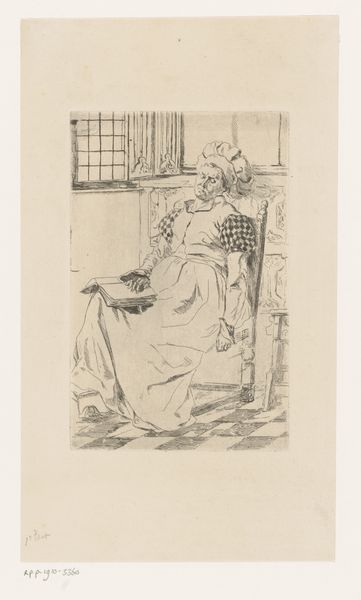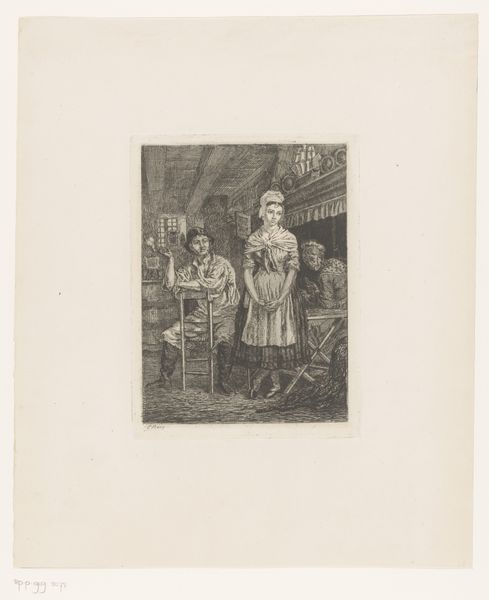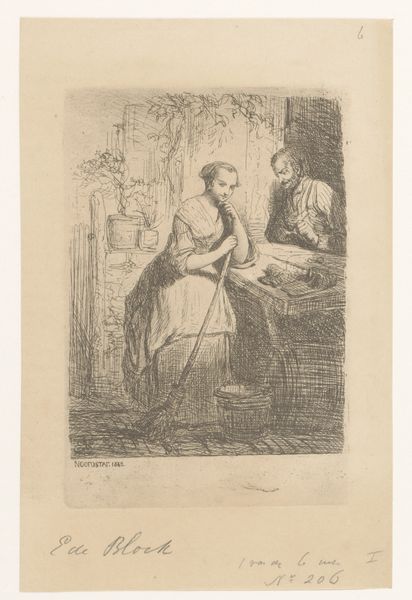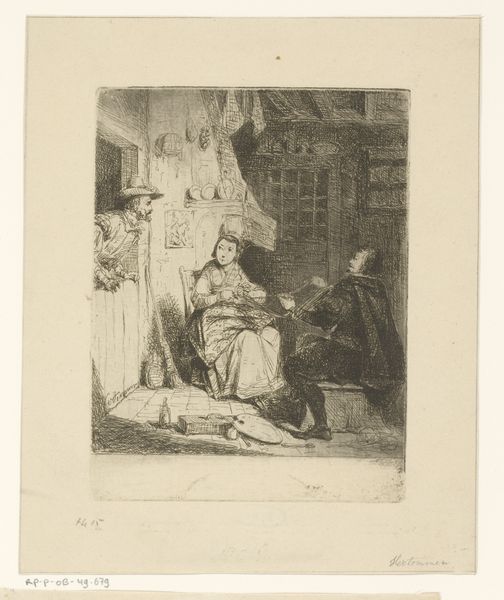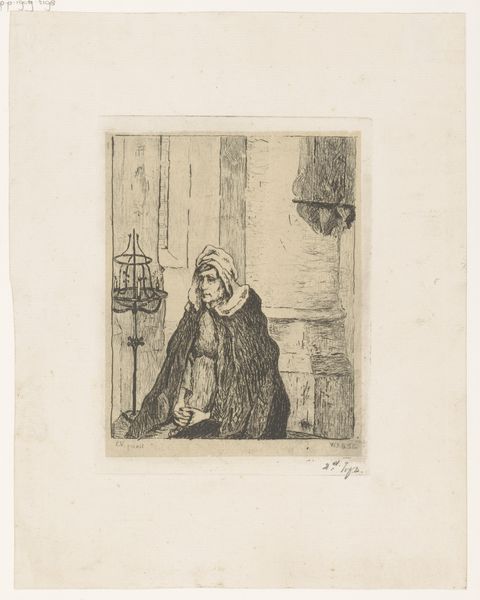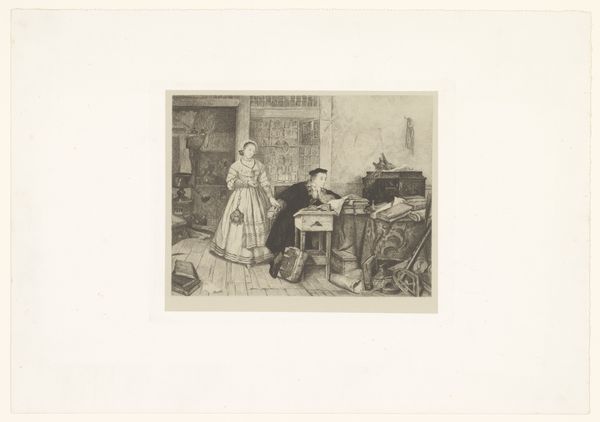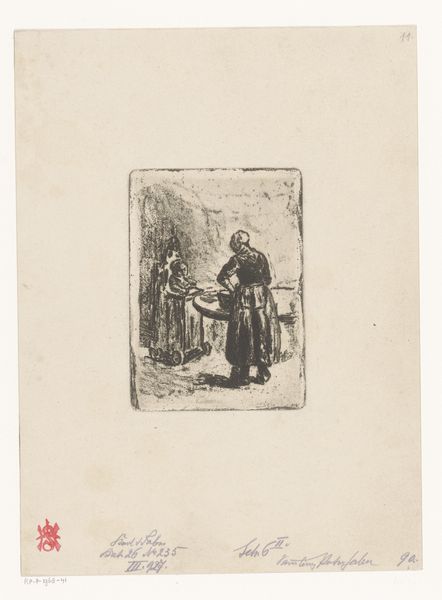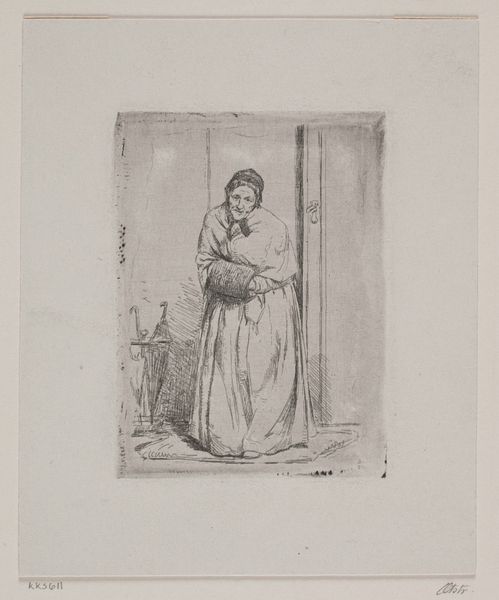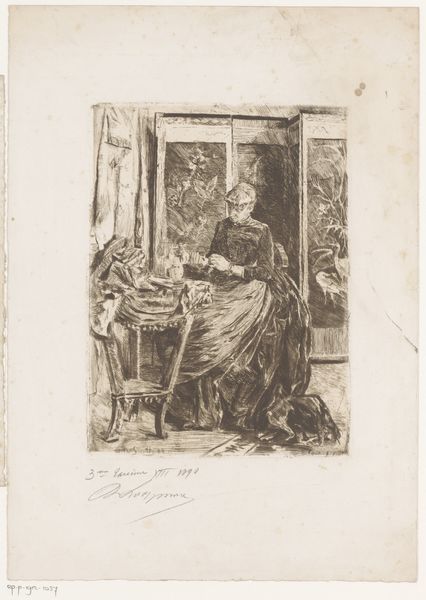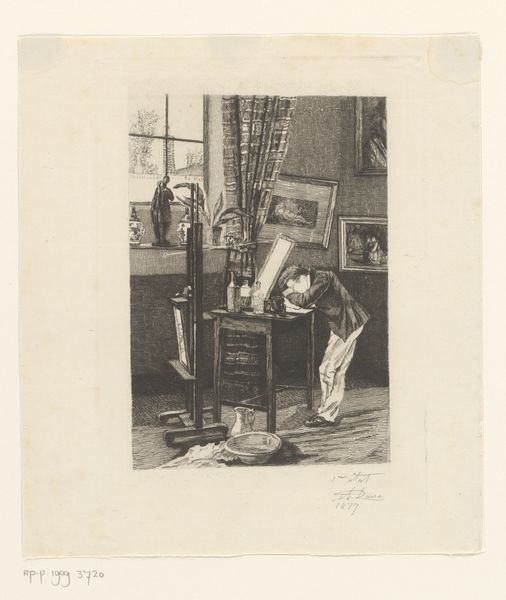
Oude dame zit comfortabel naast de kachel in de keuken 1849 - 1909
0:00
0:00
lioneloscarbaes
Rijksmuseum
drawing, print, etching, paper
#
portrait
#
drawing
# print
#
etching
#
paper
#
genre-painting
#
realism
Dimensions: height 187 mm, width 160 mm
Copyright: Rijks Museum: Open Domain
Curator: What a wonderfully intimate scene. We're looking at an etching by Lionel Oscar Baes, likely created between 1849 and 1909, entitled "Oude dame zit comfortabel naast de kachel in de keuken"—"Old lady sits comfortably by the stove in the kitchen". Editor: The mood is quite somber. The composition is very centered on the woman. It has a certain stillness about it, even though it seems so firmly planted in a quotidian setting. I'm particularly struck by the level of detail given it is a print. Curator: Yes, the detail achieved with the etching technique allows us to really consider the textures—the fabrics of her clothing, the worn surfaces of the stove and kitchen implements, even the wrinkles on her face. Think about the labor involved, creating this detailed plate! These small scenes from everyday life were crucial for creating a sense of national identity and connecting urban viewers with the rural lives around them. Editor: And how the very act of printing and distribution impacted visual culture. Images like these helped normalize and cement societal perceptions. Did such readily accessible images serve to reinforce or perhaps challenge existing social hierarchies? Curator: Well, realism, as a movement, arose during a period of great social upheaval. Genre painting often served both to legitimize the status quo and, perhaps unintentionally, to critique it by simply depicting working class lives without idealizing them. We, as the audience, are left to wrestle with our own feelings. Editor: This piece invites us to reflect on our assumptions of domestic spaces and the narratives held within them. We examine who controls visual representations and towards what purpose. The choice of material - print- means this imagery was intended for wide consumption. What choices did Baes make regarding image, composition, production and the potential for social impact? Curator: And it prompts us to consider what’s missing from the image. What's left unseen and unsaid is often more powerful than what is visible. Editor: Agreed. An etching meant for a larger audience – each impression of a similar quality- allowed for a new kind of distribution that we may consider quite modern today. Curator: Food for thought, indeed! Thanks for that perspective. Editor: A necessary consideration when looking at art and its influence.
Comments
No comments
Be the first to comment and join the conversation on the ultimate creative platform.
